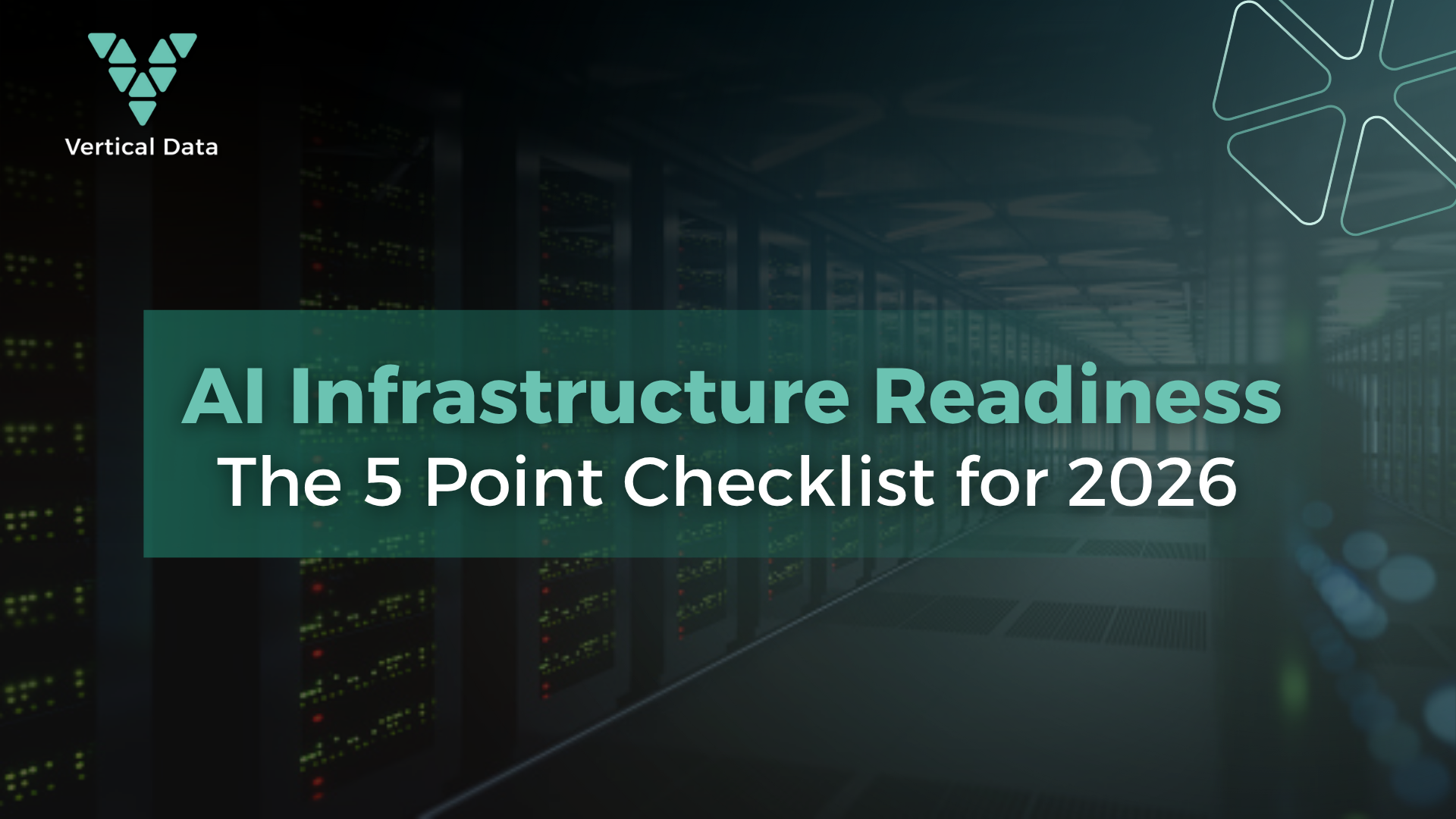Introduction
As we approach 2026, the question for CIOs and IT leaders is no longer if they will adopt AI, but how they will scale it. The transition from experimental AI pilots to enterprise-wide deployment is exposing a critical reality: most existing data center infrastructure is not prepared for the intense demands of industrial-scale artificial intelligence. According to a recent McKinsey survey, 67% of enterprises that failed to scale their AI initiatives cited inadequate infrastructure as a primary roadblock. As you plan for the year ahead, it is imperative to move beyond proof-of-concept environments and build a robust foundation for the future. This five-point checklist provides a practical framework for evaluating your organization’s AI infrastructure readiness for 2026.
1. Power and Sustainability
The most significant constraint for AI at scale is power. AI-specialized data centers consume vastly more energy than traditional facilities, with projections showing that AI data centers’ power consumption could reach 90 terawatt-hours by 2026, according to Deloitte. Is your power strategy sustainable and resilient? To be ready for 2026, you must have a clear roadmap for securing a reliable and, increasingly, renewable power supply. This involves not only assessing your current power capacity but also engaging with utility providers to forecast future availability and exploring long-term Power Purchase Agreements (PPAs). A dependency on an unstable or carbon-intensive grid is no longer just an operational risk; it is a significant financial and reputational liability.
2. Cooling and Facility Design
The massive power consumption of high-density GPU clusters translates directly into a massive cooling challenge. Traditional air-cooling methods are often insufficient for the heat generated by modern AI hardware. For 2026, readiness means having a clear strategy for advanced cooling solutions. This includes evaluating the feasibility of liquid cooling, whether direct-to-chip or full-immersion systems, which are becoming the standard for high-performance computing environments. Your facility design must be modular and flexible, allowing for the integration of these new cooling technologies without requiring a complete overhaul of your data center.
3. Hardware and Compute Strategy
An AI-ready infrastructure is GPU-aware and built for constant evolution. With the rapid pace of hardware innovation, a rigid, monolithic hardware strategy is a recipe for obsolescence. For 2026, your infrastructure must be designed for agility. This means embracing a modular architecture that allows for the seamless upgrade of compute, storage, and networking components. Your compute strategy should be built around a containerized, orchestrated environment (such as Kubernetes) that can elastically scale resources and manage diverse AI workloads. A clear hardware roadmap, aligned with a flexible financing model, is essential to avoid being locked into underperforming assets.
4. Network and Latency
AI workloads generate immense volumes of east-west traffic (server-to-server communication within the data center) that can overwhelm traditional network architectures. A startling 89% of organizations plan to deploy AI workloads soon, yet only 14% believe their current network is ready, according to Cisco’s latest insights. For 2026, readiness requires a high-bandwidth, low-latency network fabric that is intelligently segmented. This means creating dedicated networks for different types of traffic (e.g., storage, management, and model training) to ensure performance and security. Investing in AI-driven network operations tools that provide real-time telemetry and automated management will be critical to handling the dynamic and unpredictable nature of AI traffic.
5. Compliance and Data Governance
Finally, as AI becomes more integrated into core business processes, the regulatory and compliance landscape is becoming increasingly complex. Your infrastructure must be designed to support robust data governance and security from the ground up. This includes the ability to enforce data sovereignty requirements, manage data access controls, and maintain detailed audit trails for both data usage and model behavior. For industries like healthcare and finance, this means ensuring compliance with regulations like HIPAA and GDPR. An AI-ready infrastructure provides the tools to manage data lineage, mask sensitive information, and monitor models for bias and drift, ensuring that your AI initiatives are not only powerful but also responsible and compliant.
Conclusion
Preparing your infrastructure for the demands of AI in 2026 is a strategic imperative. By moving beyond a piecemeal approach and adopting a holistic framework that addresses power, cooling, hardware, networking, and compliance, you can build a resilient and scalable foundation for innovation. The organizations that treat their infrastructure not as a cost center but as a strategic enabler of AI will be the ones to lead their industries in the years to come.


